Roma hosted the Serie A top finishers of this season, Juventus, over the weekend. The Old Lady, already crowned champions of the league had little to play for, save their pride for their fans on the road and their new kit debut. The Giallorossi, on the other hand, are currently fighting hard for a Champions League spot next season.
The two historic rivals left it late to entertain with Roma scoring two goals in the final quarter of the game handing Juventus a surprising upset. The mighty Bianconeri weren’t clinical enough with their chances and seemed over-reliant on their superstar Cristiano Ronaldo which led to Roma stealing their much needed three points. In this tactical analysis we examine how both teams played out at the Stadio Olimpico.
Lineups
Juventus lined up in a 4-4-2 with Ronaldo and Paulo Dybala up top. The central midfield was marshalled by Emre Can and Miralem Pjanić, with Blaise Matuidi and Juan Cuadrado often tucking inside as part of Massimiliano Allegri’s positional game. Martín Cáceres, on loan from Lazio, made a comeback after a muscular injury alongside captain Giorgio Chiellini.
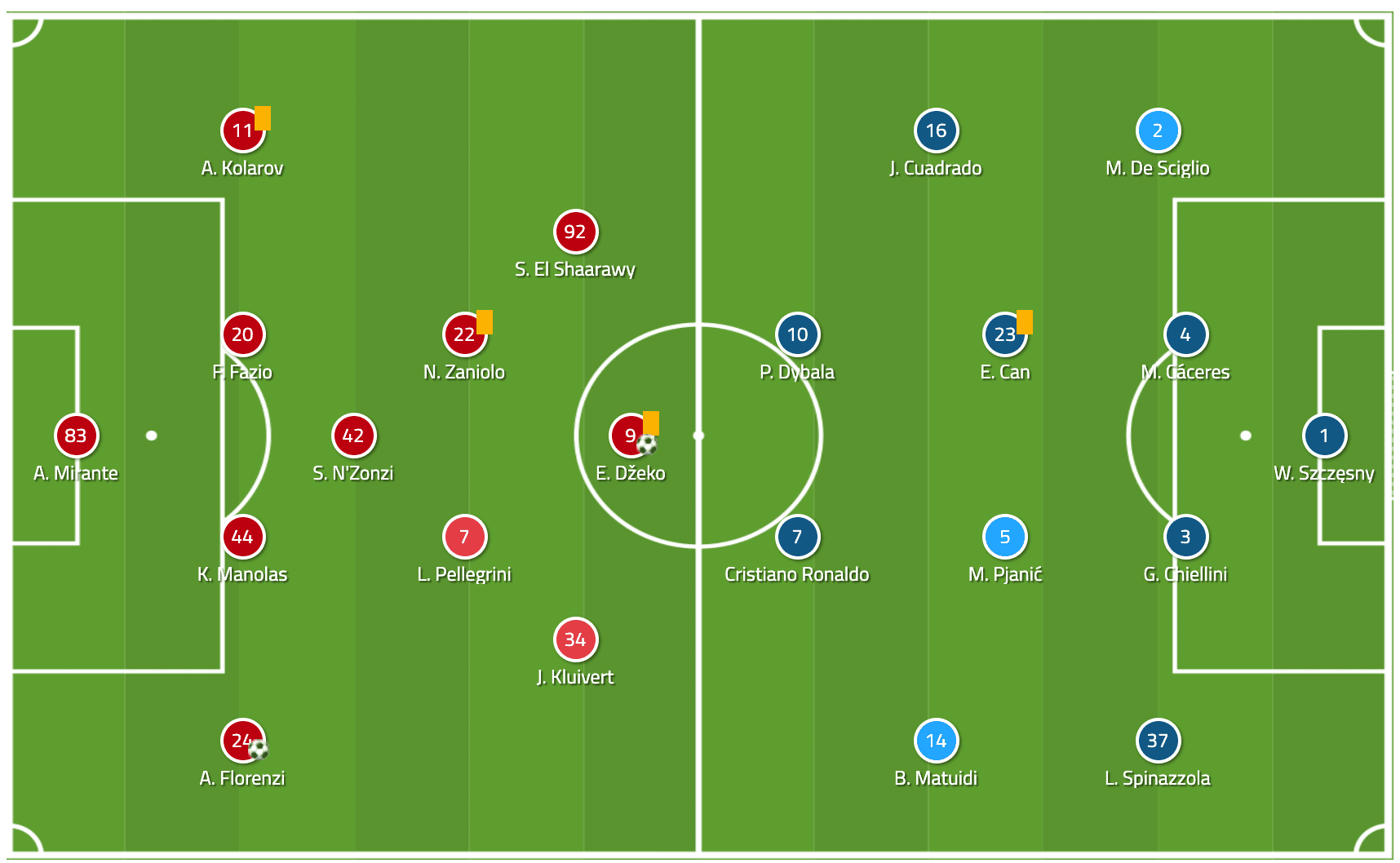
Roma has been undergoing a phase of transition under Claudio Ranieri. The Italian manager was initially hired as a caretaker until the end of the season with an objective to qualify for the Champions League. But with Antonio Conte turning down the Roma offer in favour of a potential Inter Milan job, Ranieri looks to tempt his former side into hiring him full-time.
Roma’s managerial pickles aside, Ranieri has experimented with a few formations since March. His initial games did not land him successful wins but the last few games has shown a steady rise in momentum. Roma tried out a 4-3-3 with Steven N’Zonzi as the single pivot, a fresh look from their double-pivot systems in the previous games. With Javier Pastore and Daniele De Rossi on bench, the young Justin Kluivert was picked instead.
Juve look to kill the game early
Right from the start, we saw Juventus create chances with the hosts managing to escape narrowly thanks to some acrobatic saves from Antonio Mirante. It was Ronaldo who was the focus of every attack with Chiellini looking to play him early. The Portuguese would then seek out Dybala or Cuadrado quickly, or in certain moments decide to take on the entire Roma defence single-handedly.
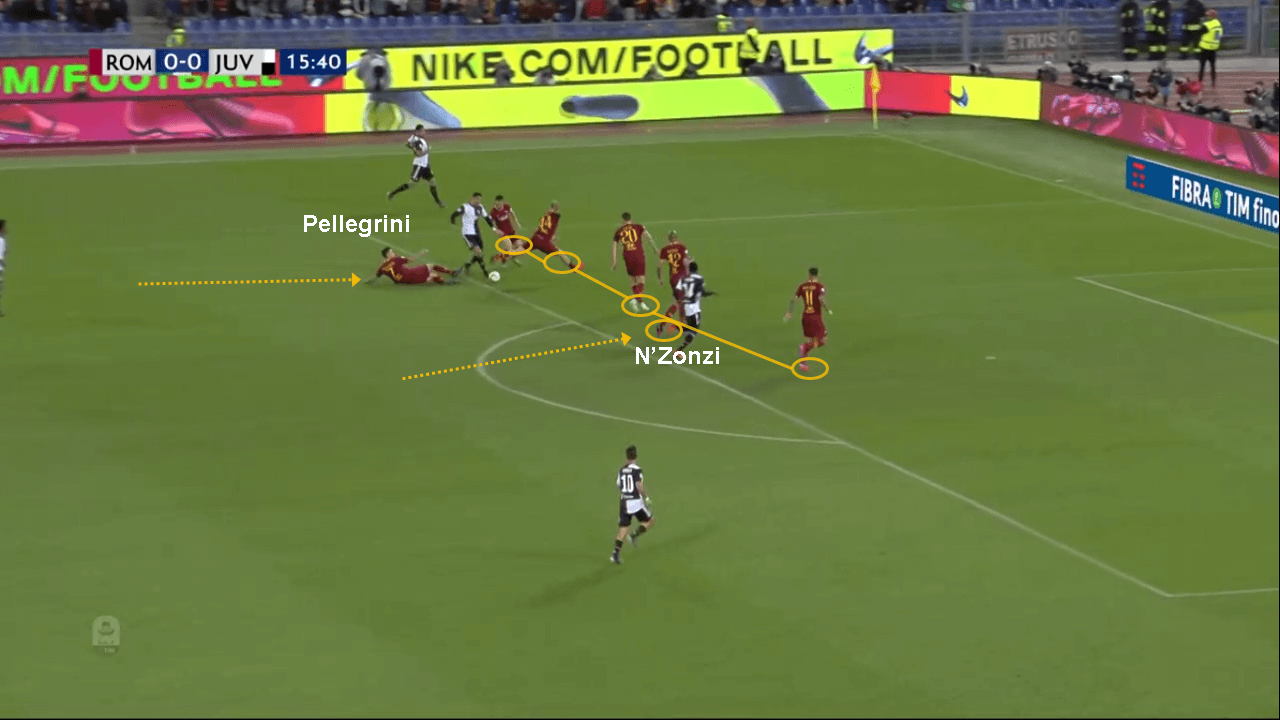
With little at stake, Massimiliano Allegri looked to perfect elements of his positional game rather than scurry with attacking transitions upon winning the ball. It was perhaps Ronaldo with the bigger desire to add to his personal tally for the records. Ronaldo would often drop deep into pockets between the lines of the Roma formation and involve in the build-up play. Blaise Matuidi and Emre Can would push higher up with Miralem Pjanić covering as a pivot.

Roma looked unsettled and nervous against the Old Lady’s heavy artillery but scraped through successfully in the initial moments and gradually managed to pick up their rhythm as the game progressed.
The casual build up trend
Both teams were similar in the first half in their approach to the game. They looked to find an opportunity to quickly counter when their opponents were caught out of shape. But, if they missed that window of opportunity, they looked to play it back to their defence and build up patiently.
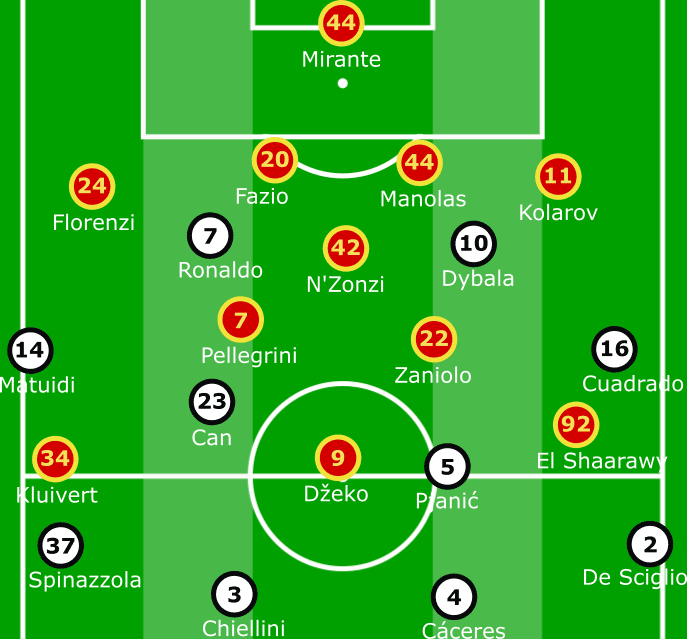
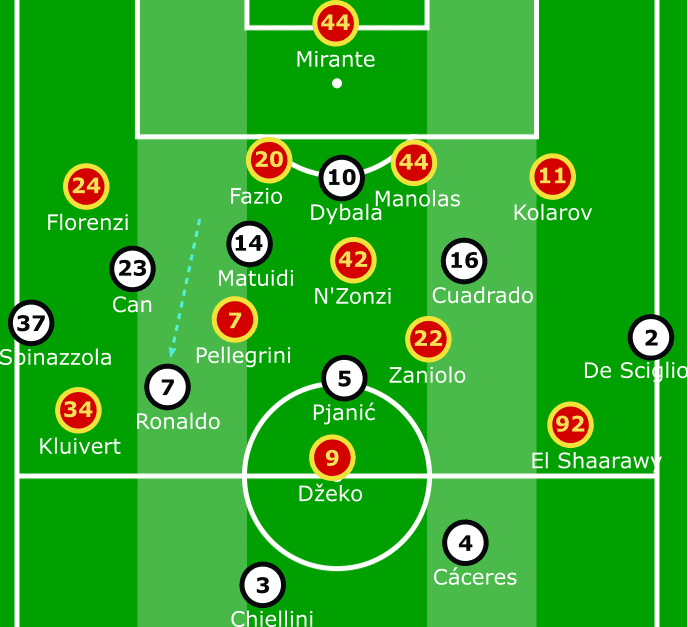
Roma’s build-up heavily involved Steven N’Zonzi as the organising midfielder to receive the ball from his back line. The captain Alessandro Florenzi had more freedom to attack aggressively, having experience in various positions including central midfield. On the left, Kolarov would wait for Stephan El Shaarawy to tuck in and overlap the space left behind.
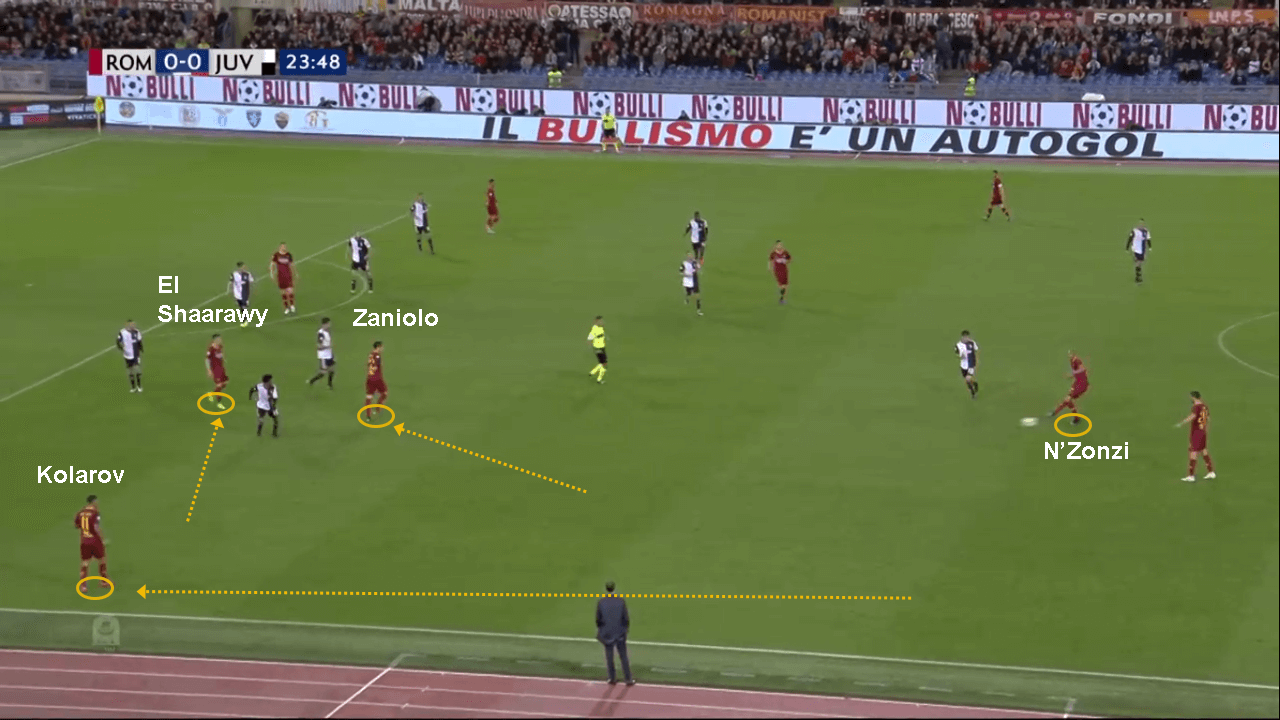
Roma would then seek out Edin Džeko as the target man who kept the Juve central defenders pinned back. He targeted his runs through the left channel in particular looking to exploit Martín Cáceres’ possible lack of match sharpness. Džeko’s game as a striker was different to Juve’s employment of two strikers, who were given a lot more positional freedom.
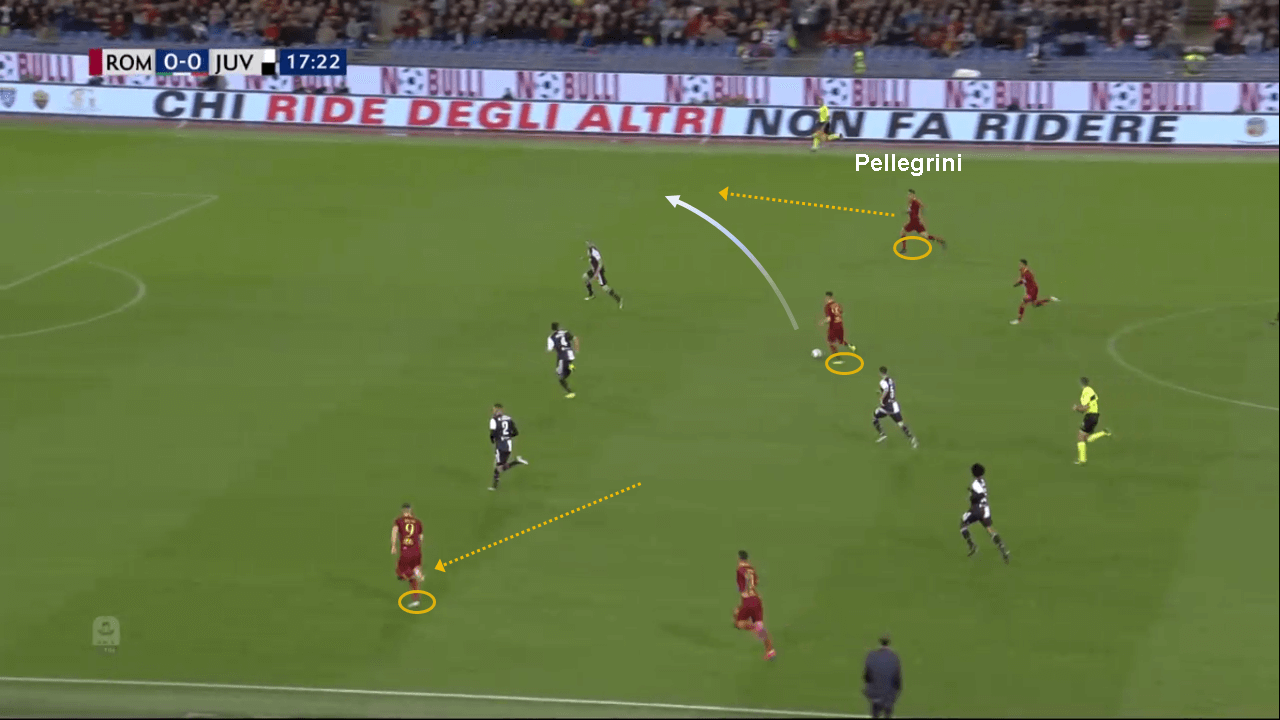
Utilisation of players in buildup
Roma heavily relied on N’Zonzi in playing out from the back with the Frenchman being the solo pivot. As opposed to a double-pivot 4-2-3-1 that Ranieri had hitherto utilised that gave his fullbacks a lot more liberty to attack, this game demanded Aleksandar Kolarov and Florenzi to be more disciplined and pick the right instance to move forward or stay back and support N’Zonzi. The holding midfielder deserves full credit in this game for organising the Roma midfield singlehandedly and making crucial defensive interventions.

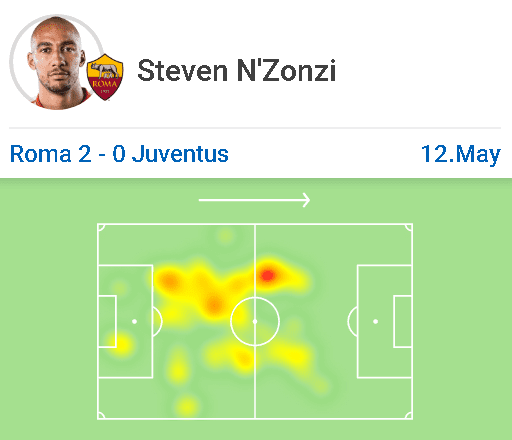
For Juventus, it was refreshing to see a change in Cuadrado’s typical winger movement. Allegri tasked Cuadrado to drift inside very often and support the Juventus positional game. In the second half, he moved Cuadrado on the same side as Matuidi and contributed significantly taking the ball out from deep. With Roma defending in such a low block in tight spaces, it was perhaps wise to utilise Cuadrado’s technical abilities in central midfield where he had more time on the ball.

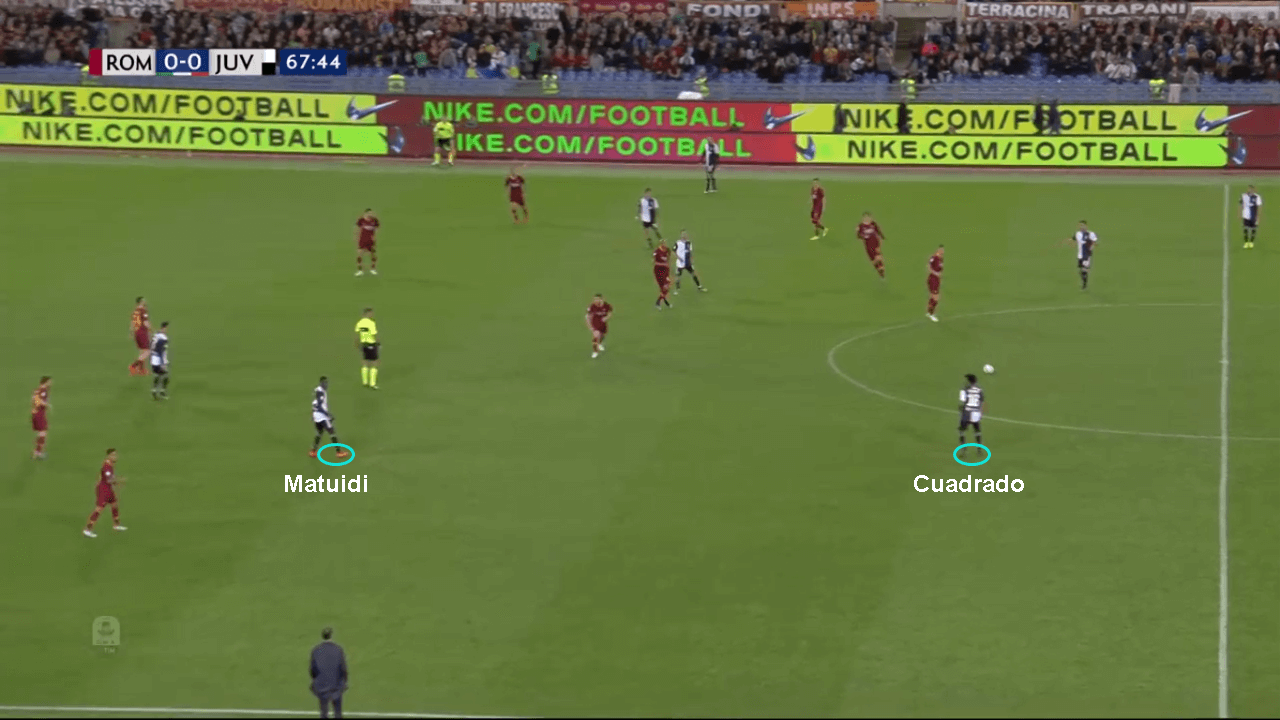
The game by the numbers
The first half hardly presented any excitement for the viewers with these tactical strategies. Except for a few counter attacks involving the woodwork at both ends, the game looked dry and boring. Roma switched to a more defensive 4-5-1 in the second half, closing down the spaces in their own half. They also showed greater conviction in the counter attacks putting pressure on Juve in their defensive transitions.
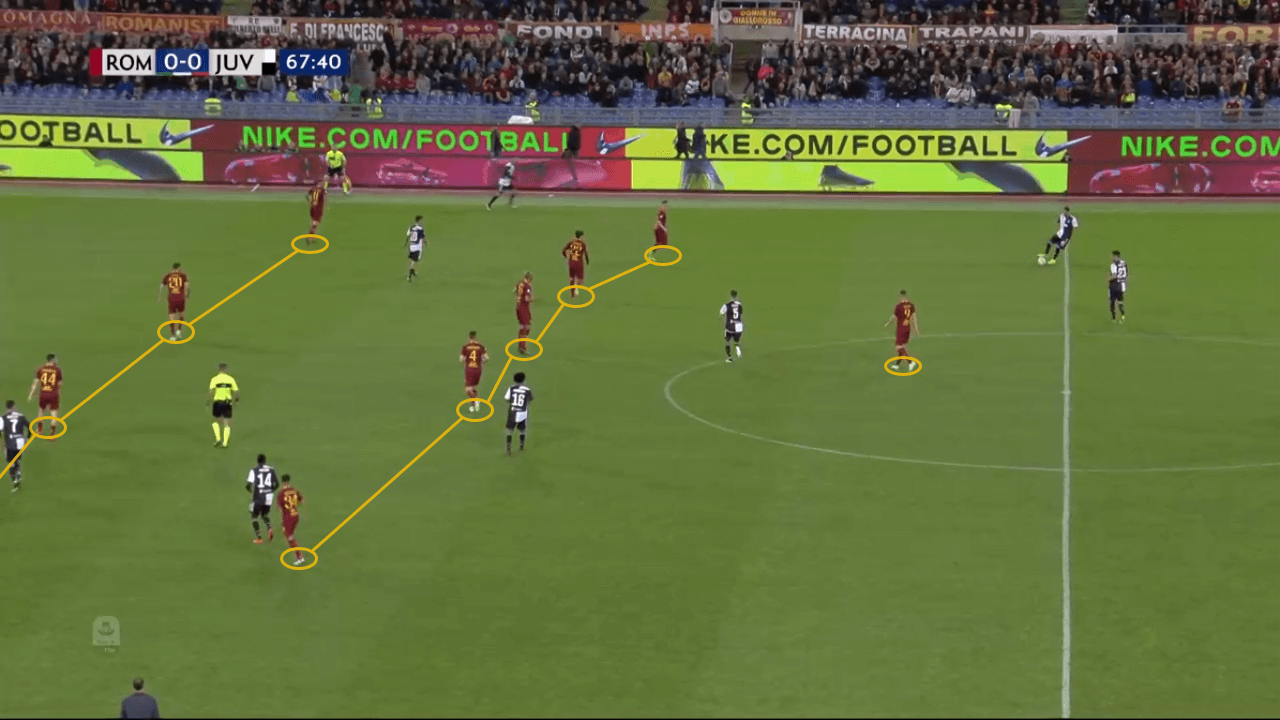
These changes easily reflected in the numbers. We see that although Juve enjoyed more possession overall, they created most of their opportunities only in the first half. Roma on the contrary had a much more dominant second half with nine shots, two of them resulting in decisive goals. Roma also managed 3 out of 10 successful crosses in comparison to Juventus’ 0 out of 3. Juventus failed to exploit width in attack and were heavily reliant on Ronaldo to both create and finish chances.
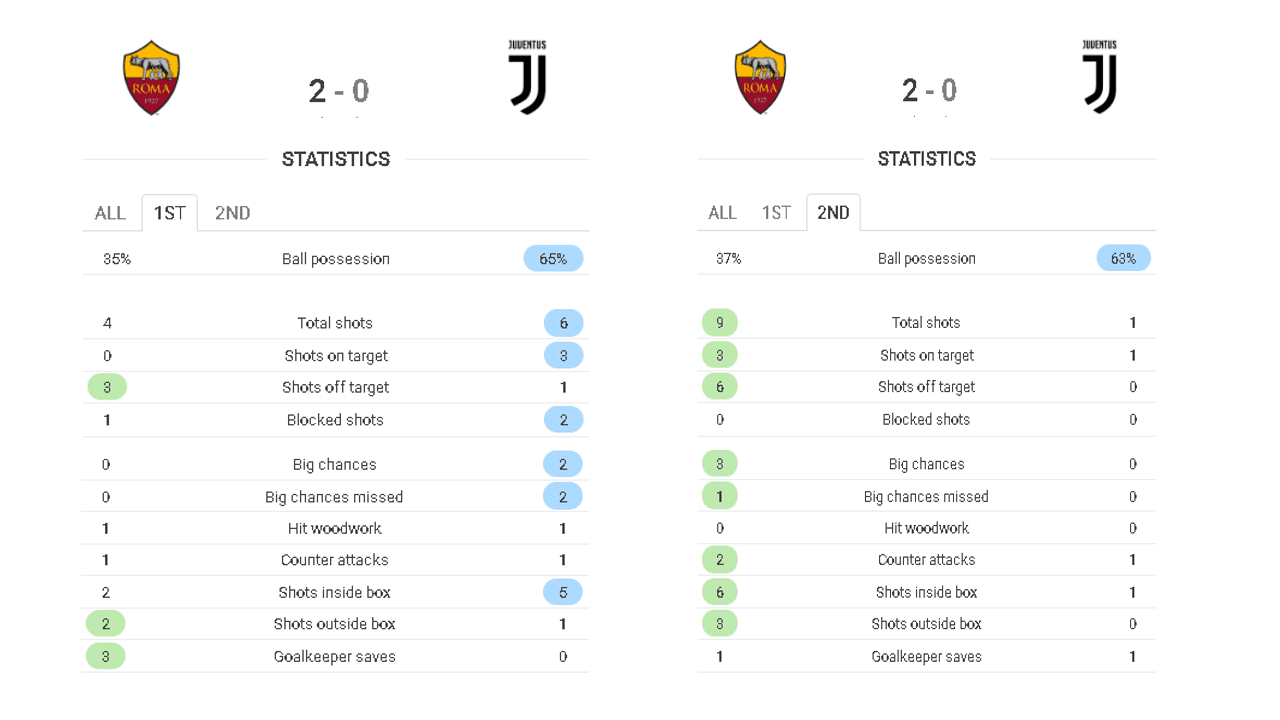
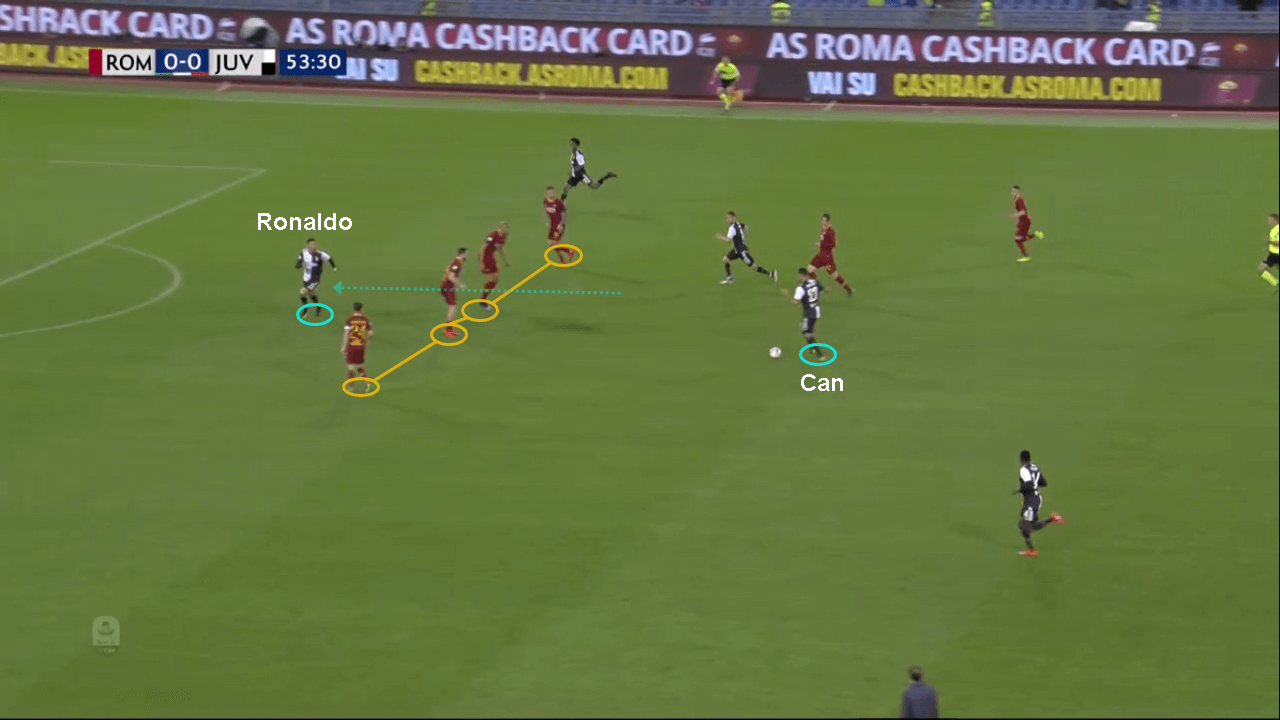
Defensively, although both teams shared a similar number of times they lost possession, Juventus were dispossessed in more dangerous areas around their penalty box in comparison to Roma. Juventus were more lethal in punishing Roma for losing the ball higher up the pitch but a goal by Ronaldo was called offside.
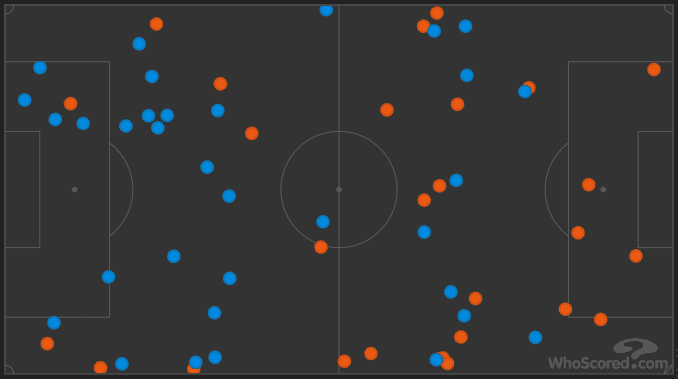

Captain leads the way
With both teams stuck in a deadlock, Ranieri made a tactful decision of bringing on Cengiz Ünder for Kluivert. The Turk made an instant impact to the game on the right flank with his movement off the ball. The captain Florenzi was quick to capitalise on this change starting with a throw-in. With an overlapping run that caught the Juve defenders off-guard, he negotiated past them using give-and –go’s with Ünder and a neat assist by Džeko to chip Wojciech Szczęsny.
The 79th-minute goal gave the Roma players the much-needed boost of confidence and the support of the Gialorossi fans to keep pushing. They stuck to their defensive 4-5-1 block in their half with constant pressing to deny Juve players any time on the ball.
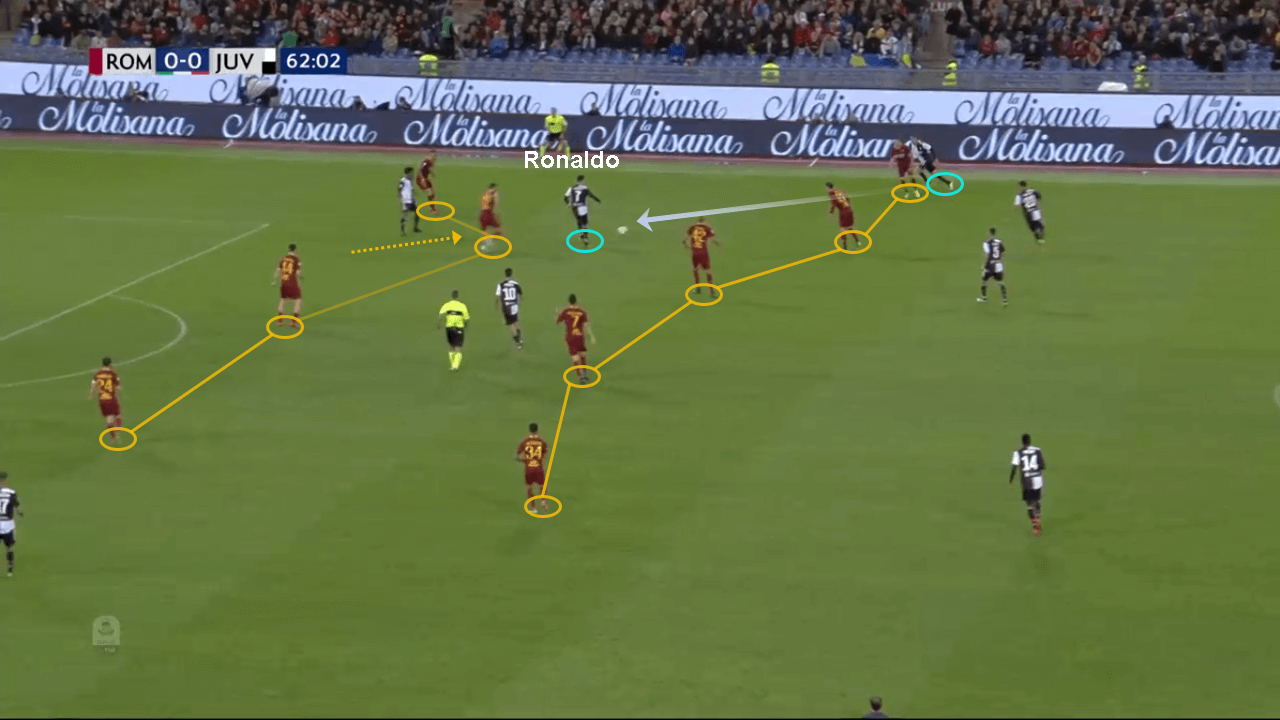
In the dying moments of injury time, it was Ünder again who was alert to initiate a counter-attack and find Džeko to kill the game just before the final whistle.
Conclusion
Juventus, much like their new jersey, looked very off their colour and tempo. The game model was a bold experimentation by Allegri and held signs of promises at certain moments of the game. But the players lacked the intensity or the desire to win in general, and in fairness, it was perhaps Chiellini who looked most dynamic on the day.
The win was much needed for Roma’s momentum and is a big boost in their contest for the top four. They next face Sassuolo while currently in fourth place, Atalanta face Juventus. With just a point behind Atalanta, perhaps the keys to a Champions League spot next season does lie in Ranieri’s hands.
If you love tactical analysis, then you’ll love the digital magazines from totalfootballanalysis.com – a guaranteed 100+ pages of pure tactical analysis covering topics from the Premier League, Serie A, La Liga, Bundesliga and many, many more. Buy your copy of the May issue for just ₤4.99 here, or even better sign up for a ₤50 annual membership (12 monthly issues plus the annual review) right here.

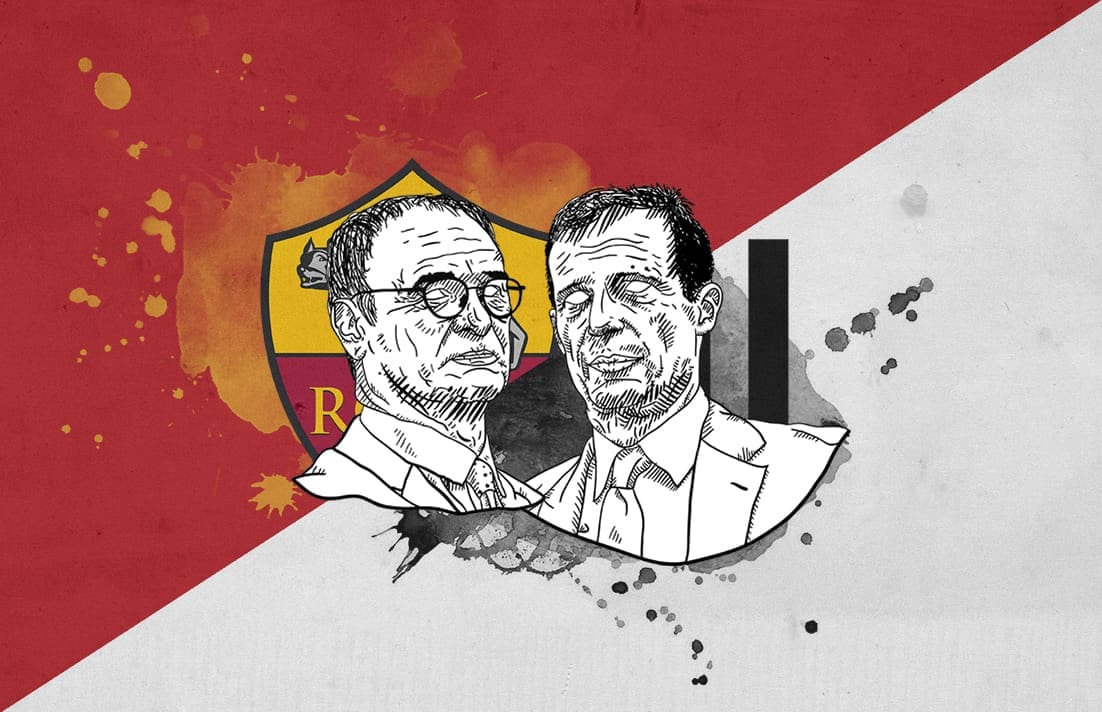
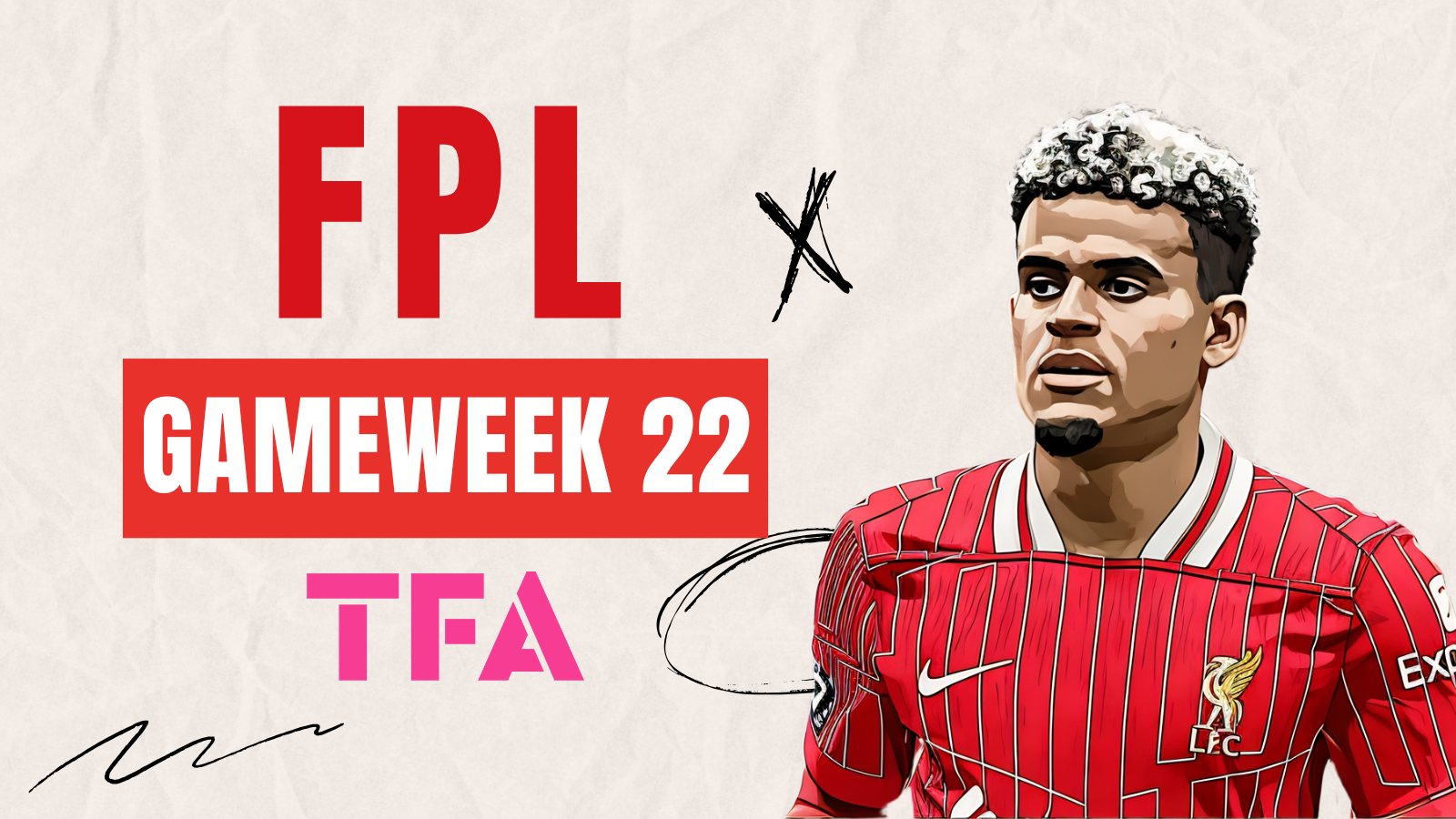
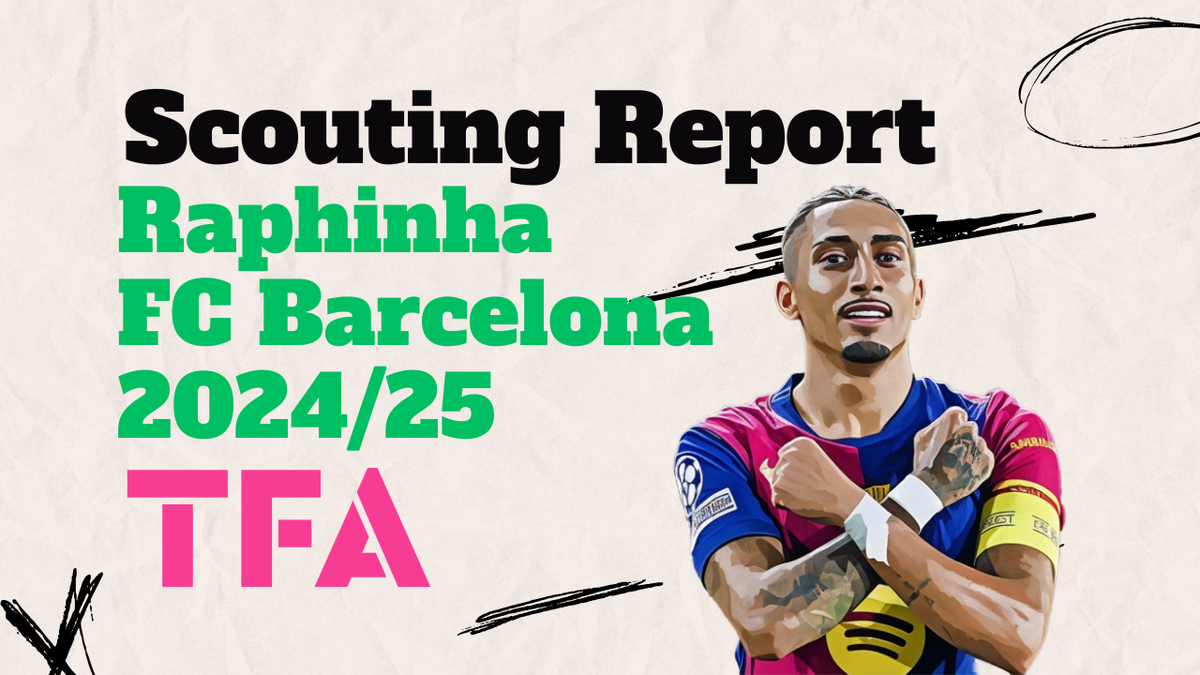
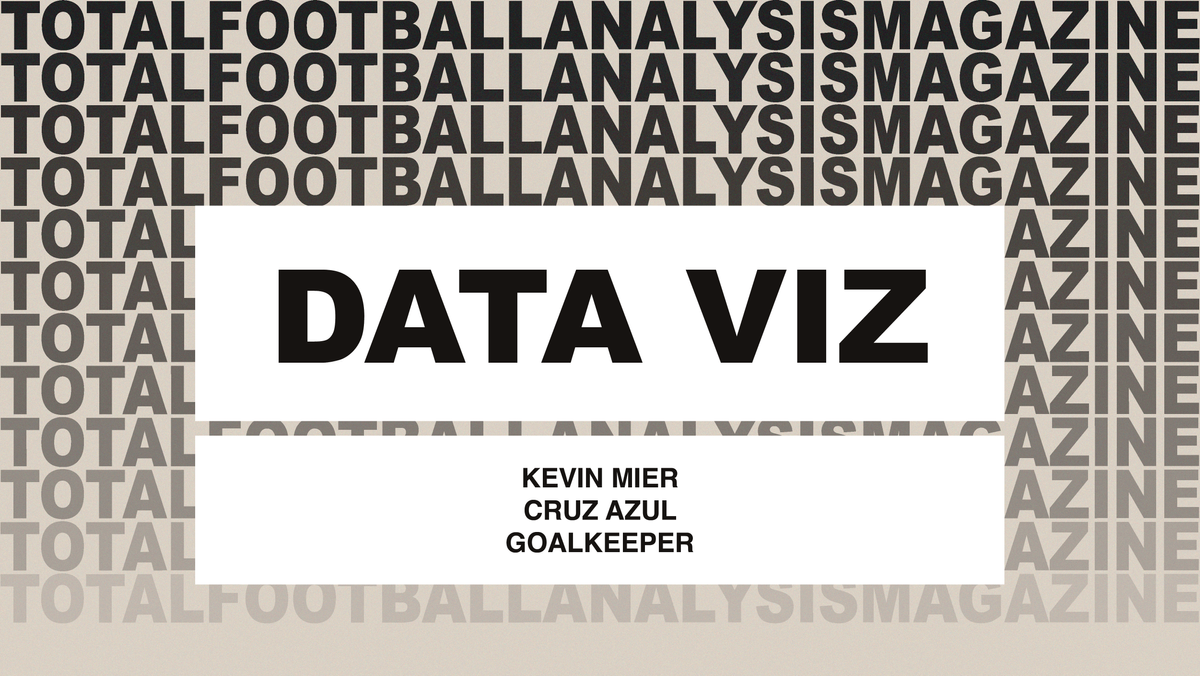
Comments